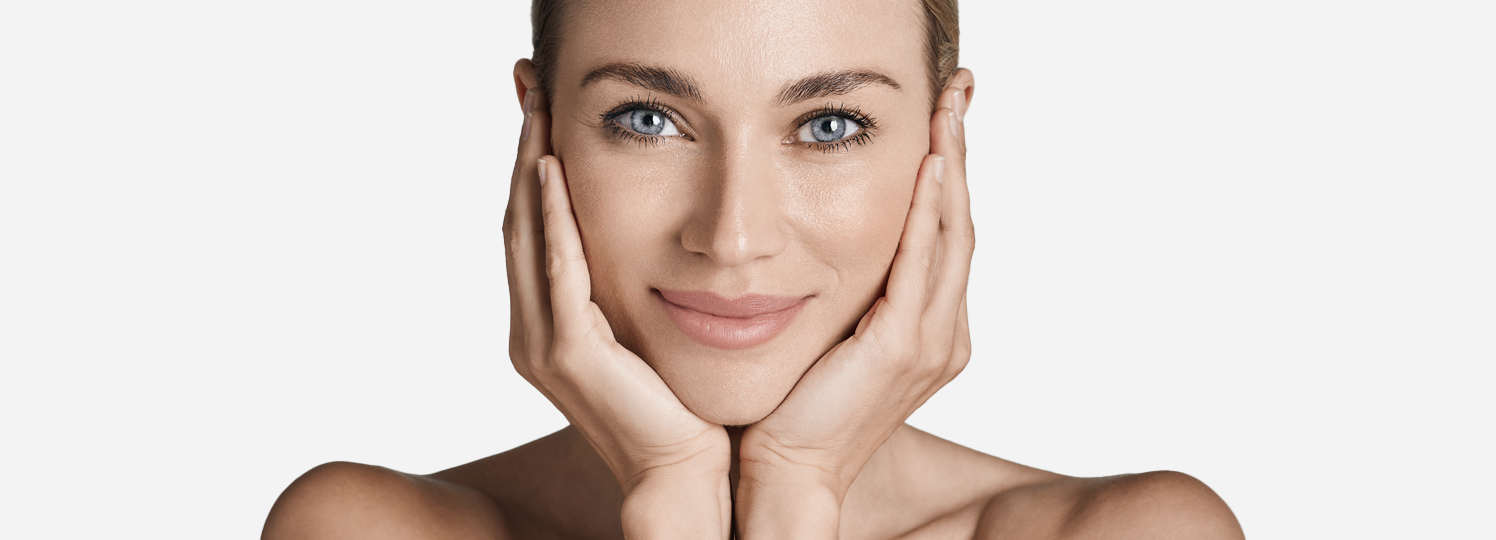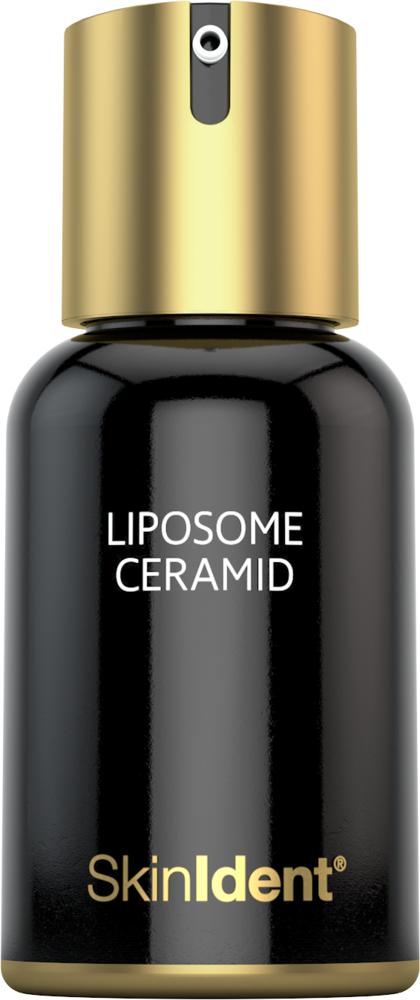

Basic Care



Basic Care
This worthwhile product is particularly distinguished by highly effective multilamellar liposomes as well as urea, ceramides, hyaluronic acid and vitamin E. The barrier and protective function of the upper layer of the skin is thereby greatly strengthened. Vitamin E protects the skin effectively against environmental influences such as UV-rays. LIPOSOME CERAMID is suitable for all skin types. It is particularly recommended for dry skin with an impaired barrier function in the horny layer. The skin’s barrier function can be damaged by incorrect skincare, environmental influences, the natural ageing process, medication etc.
Application of SkinIdent Liposome products
For oily to normal skin it is adequate to only apply one of the three liposome products, especially in warm climates. For normal to dry skin, especially in cold climates, after the application of a liposome product skin should be cared for and pampered with one of the six SkinIdent creams described below.
30 ml Bottle
Art.-Nr. 9001
10 ml Tube
Art.-Nr. 9501
Aqua, Caprylic/Capric/Stearic Triglyceride, Alcohol, Glycerin, Urea, Lecithin (and) Alcohol, Cetearyl Octanoate, Glycosphingolipids (and) Phosphosphingolipids, Ceramid IIIB, D-mixed-Tocopherols, L-Prolin, Lactic Acid, Sodium Hyaluronate, Allantoin, Citric Acid, Sodium Hydroxide
Aqua:
Water. It accounts for around 65% of the weight of the human body and is therefore of fundamental importance for bodily functions, including those of the skin. In many cosmetic products (aqueous solutions, cleansers, emulsions), water is the ingredient with the largest proportion of the formulation in terms of quantity and forms the basis of the aqueous phase in emulsions. Water is a good solvent for polar (hydrophilic) substances such as alcohols, water-soluble vitamins or salts. For use in cosmetic products, the water used is generally pre-treated to remove microorganisms that could lead to spoilage of the product or dissolved salts that may impair the stability of emulsions or gels (sterilization and desalination).
Caprylic/Capric/Stearic Triglyceride:
Vegetable neutral fat. Contains almost all the fatty acids found in skin sebum and has moisturizing and protective properties.
Alcohol:
Ethyl alcohol: Body identical. Has a refreshing and antibacterial effect. Also serves as a solvent for other ingredients. Contrary to claims to the contrary, there is no risk of a drying effect on the skin at normal application concentrations!
Urea:
The water-soluble urea is used in numerous cosmetic products. Urea is a component of the natural moisturising factors of the horny layer (content between 7 % and 12 %; up to half lower in chronically dry skin) and has a high water-binding capacity. It contributes to sustained moisturisation of the skin and reduces transepidermal water loss. Urea has a keratoplastic effect, in higher concentrations it has a keratolytic effect and is therefore also used in the care of skin affected by psoriasis or atopic dermatitis (neurodermatitis). Urea is also able to reduce the irritating potential of surfactants.
Lecithin (and) Alcohol:
Lecithin concentrate in alcohol, can form liposomes, in creams as a high-quality co-emulsifier
Cetearyl Octanoate:
Care lipid (ester) made from plant-based raw materials.
Glycosphingolipids (and) Phosphosphingolipids:
Precursor ceramides; are converted into the nourishing free ceramides on the skin surface
Ceramid IIIB:
Important component of the epidermis, especially the upper cell layers; therefore a valuable skin-physiological component of skin care products
D-mixed-Tocopherols:
Is the name of a mixture of natural tocopherols (vitamin E; D-alpha-, beta-, gamma- and delta-tocopherol). Vitamin E is the most important skin protection vitamin, which protects the skin from UV rays and oxygen radicals.
L-Prolin:
2-Pyrrolidine-4-carboxylic acid: Is an amino acid, predominantly a component of human collagen, is one of the skin's natural moisturizing factors.
Lactic Acid:
Lactic acid. Occurs as a metabolic product in the body and on the skin, has a peeling effect on the horny layer in higher concentrations and at a low pH value of 2 to 3, supports the moisture content in buffered form (physiological pH value of the skin approx. 5.5) and preserves the skin's protective acid mantle.
Sodium Hyaluronate:
Sodium salt of hyaluronic acid. Natural moisturiser with skin-smoothing properties, important natural component of the lower skin layers (dermis). Formerly produced from rooster combs, now produced in better quality by biotechnology.
Allantoin:
Allantoin is a body-identical, water-soluble substance and is chemically related to urea. It is found in various plants but is now produced synthetically for use in cosmetics. Its most important property is the stimulation of new cell formation. It promotes collagen formation, skin regeneration and wound healing, stimulates desquamation, smoothes the skin and can have a soothing effect on atopic dermatitis.
Citric Acid:
Citric acid. Biotechnologically produced body-identical active ingredient. Occurs in the metabolism of the human organism and can also be found in low concentrations on the skin. It protects the skin from oxidative stress, supports the product protection of the antioxidants and regulates the pH value of the product.
Sodium Hydroxide:
Sodium hydroxide. Used to adjust the pH value of cosmetic products. Sodium and hydroxide ions are identical to the body.